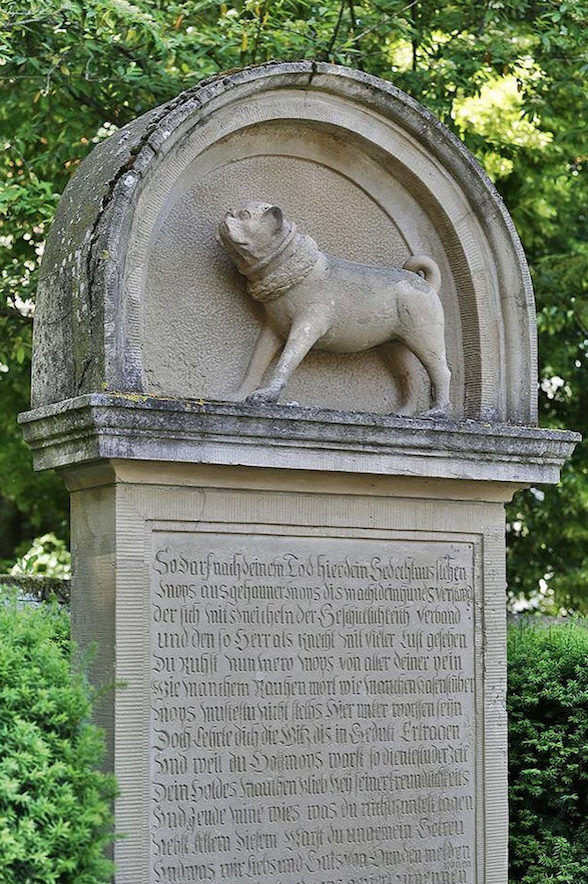
Karl Alexander was born in Stuttgart to Friedrich Karl and Eleanore Juliane in 1684. As the oldest son, he succeeded his father as Duke of Württemberg-Winnental when he was only fourteen, and inherited the Duchy of Württemberg. He became a successful army-commander in the service of the Holy Roman Emperor, married Marie, and together they had five children.
Karl Alexander wasn’t just a figurehead, he saw action as a field martial and lead the imperial army against the Osmanian troops during the Battle of Belgrade in the year 1717. When leaving his Winnenden palace, he took with him his favorite dog, a Pug named “Fortunatis.” There are a couple of version of what happened at the battle. One is that in the heat of the fighting, a frightened Fortunatis scampered off and got lost. The other is that victorious in the skirmish, Karl Alexander celebrated with his fellow generals and the Pug wandered in search of his master. Whatever version one believes, ultimately Karl Alexander couldn’t find Fortunatis and assumed the dog had died.
Fortunatis hadn’t.
Instead, he walked back to Winnenden over the course of eleven days, some 745 miles. The tired little dog was immediately recognized by the duke’s staff and treated to cuddles and treats.
As good as this bit of news was, it was bittersweet for Karl Alexander. After the battle, he moved to Stuttgart where he was appointed imperial governor of Belgrade. Sadly, Duke never saw his little Pug again. Though his servants did tell him that Fortunatis had walked home, the duke got back too late. Fortunatis was gone, dead at the age of twenty years old! He was buried in the castle’s garden, but touched by his dog’s loyalty, Alexander erected a stone memorial to him in front of Winnental Palace between the gatehouse and the main building.
Today, the memorial is a tourist attraction and cause célèbre that inspires shopkeepers to produce momentos (like Pug wine) of the brave little dog.
